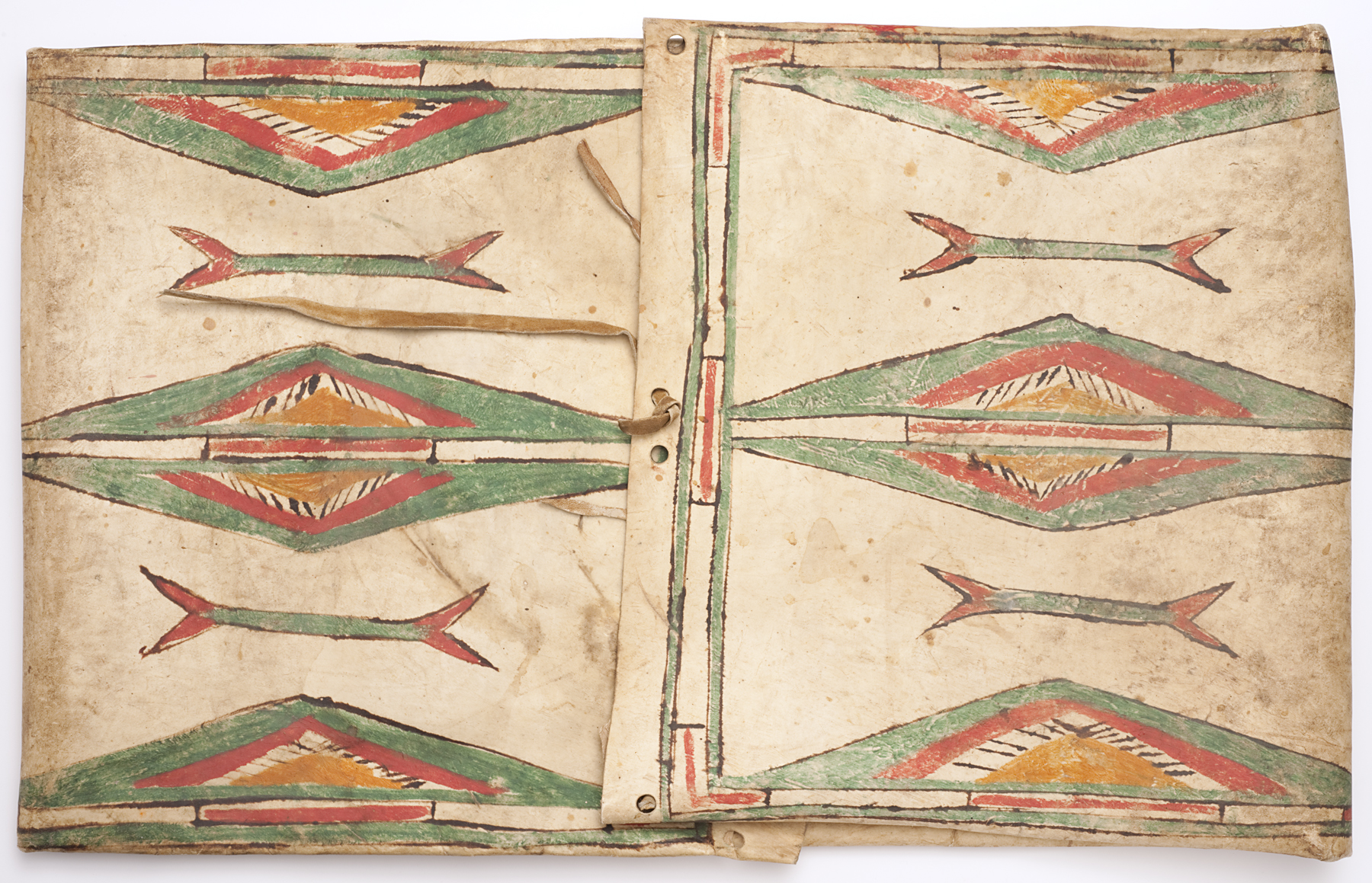parfleche, unrecorded Cheyenne, Ka’igwu, or Numunuu artist
Artwork Overview
parfleche,
circa 1920
Where object was made: United States
Material/technique: buckskin; rawhide; paint
Dimensions:
Object Length/Width/Depth (Length x Width x Depth): 74 x 47 x 6 cm
Object Length/Width/Depth (Length x Width x Depth): 18 1/2 x 29 1/8 x 2 3/8 in
Object Length/Width/Depth (Length x Width x Depth): 74 x 47 x 6 cm
Object Length/Width/Depth (Length x Width x Depth): 18 1/2 x 29 1/8 x 2 3/8 in
Credit line: Gift of Forrest E. Jones
Accession number: 2007.1812
Not on display
If you wish to reproduce this image, please submit an image request




